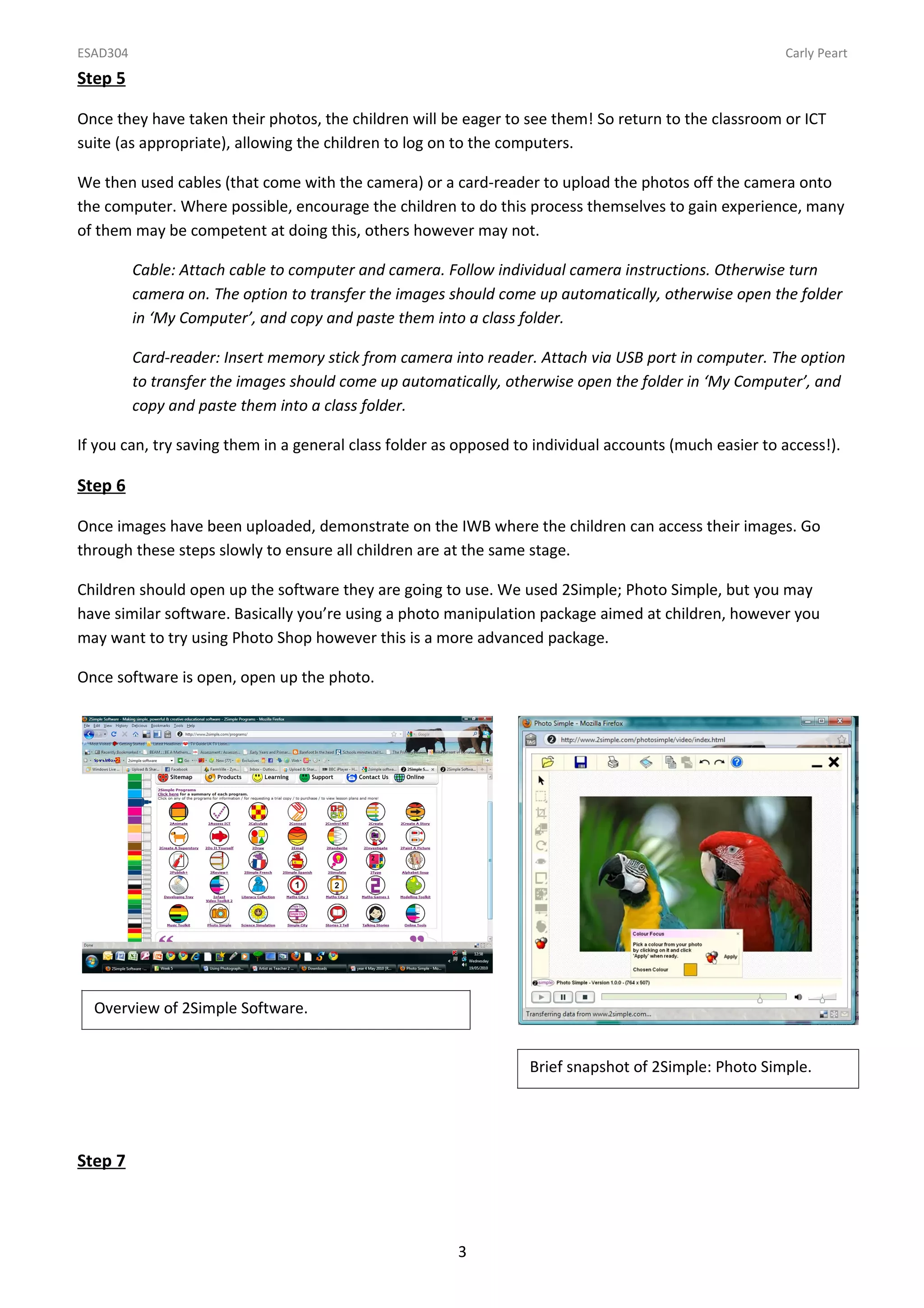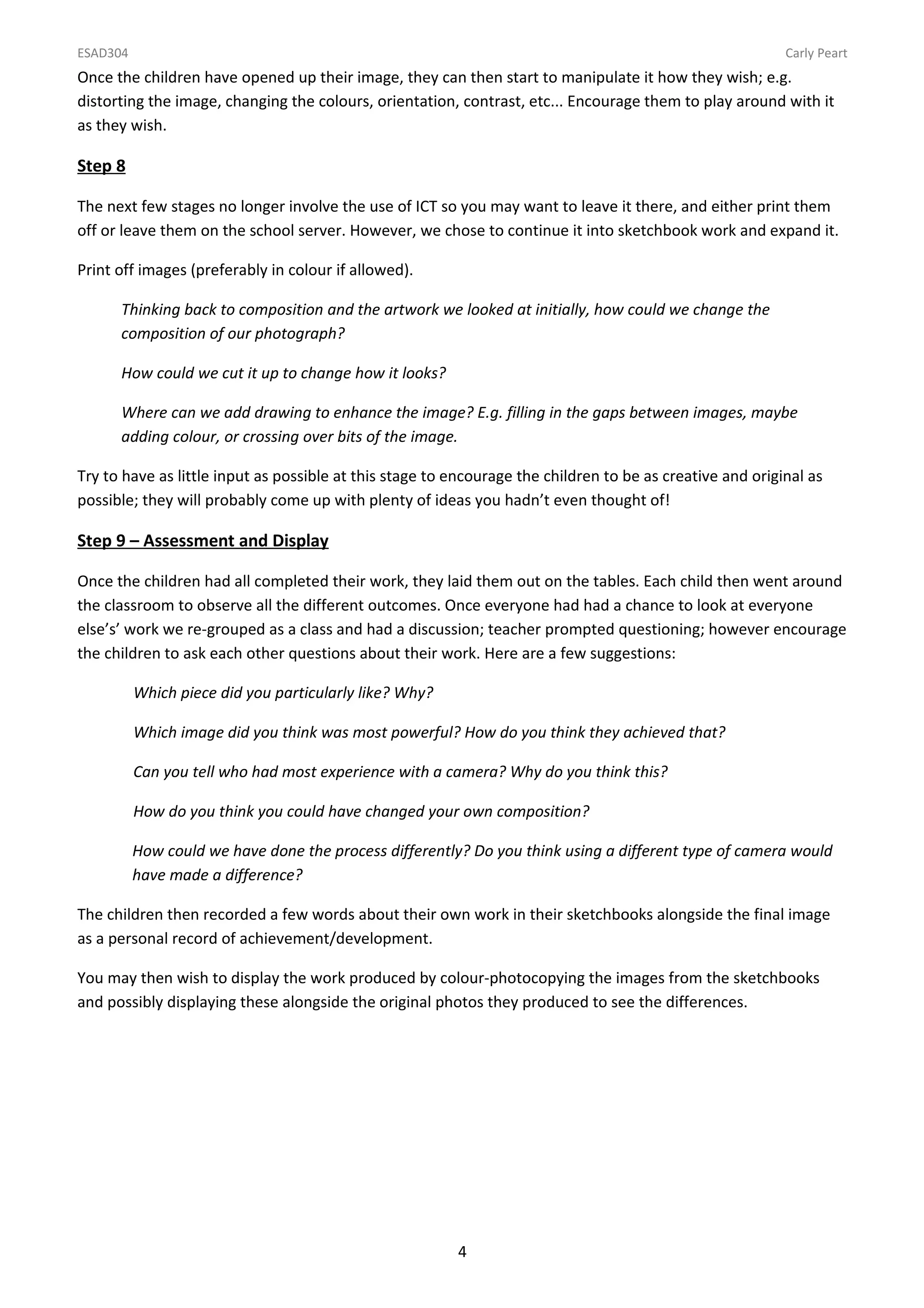This document provides instructions for a photography art project that can be done with students in Key Stage 2. It involves looking at example artworks, learning about cameras, taking photos around the school, manipulating the photos digitally, and further developing the compositions in sketchbooks. The project is designed to be completed over multiple sessions or condensed into a longer session. It aims to teach students photographic composition and digital editing skills while exploring themes from example artworks.



